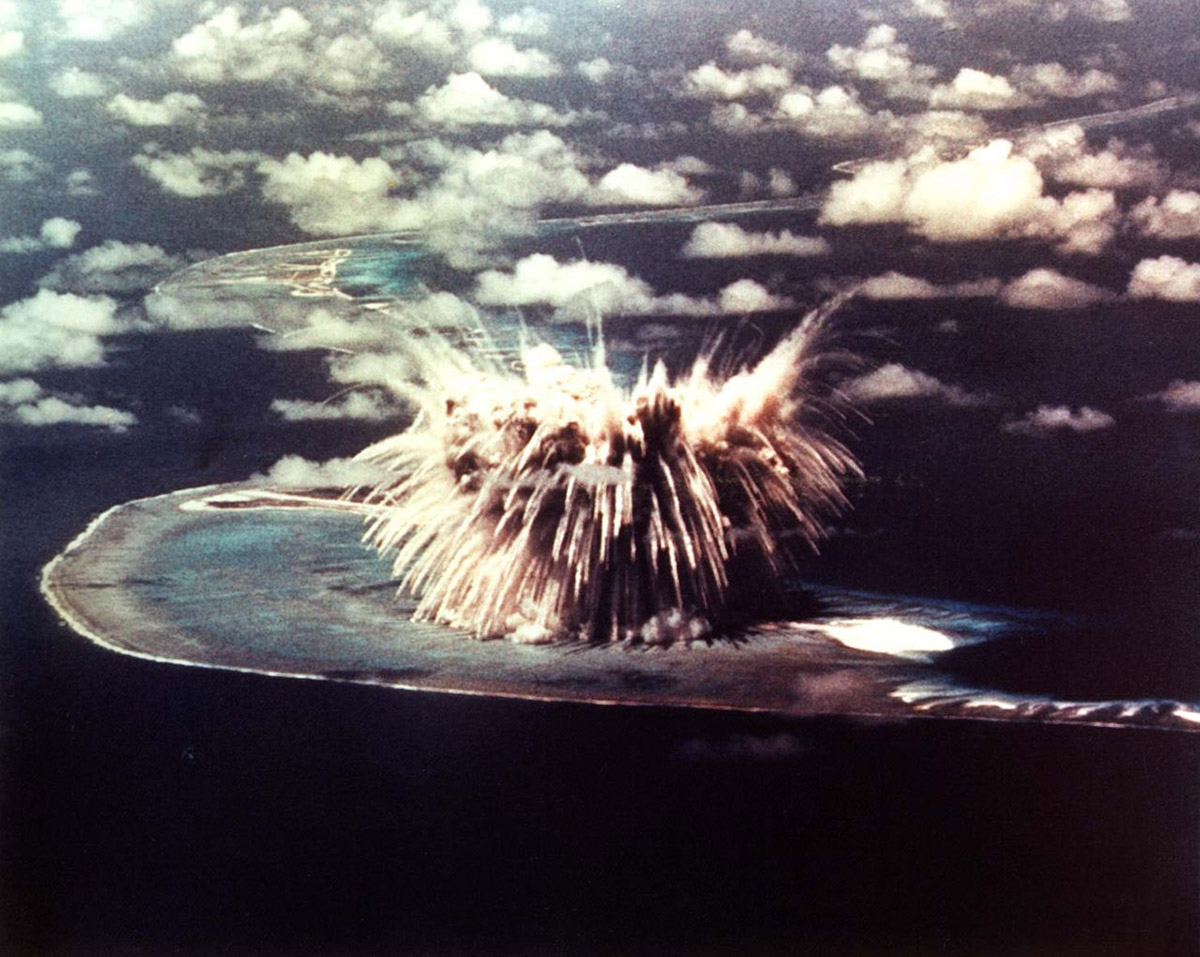Historian chronicles islanders' fight for environmental justice
By Sheri Englund

For Enewetak, a Pacific atoll shattered by the atomic bomb, climate change is a cruel new threat – but a familiar one. Its people have been facing off against human-caused environmental devastation for generations.
With a land area of barely two square miles, Enewetak became a World War II battleground, occupied successively by Japanese and United States forces. Postwar American rule brought the bomb. The United States detonated more than 40 nuclear weapons on the atoll, including the first hydrogen bomb in 1952. The explosion was 450 times more powerful than the one that annihilated Nagasaki.
Twenty years later, the people of Enewetak finally had their day in court. In the lead article published Feb. 13 in Environmental History, Mary X. Mitchell, a historian of science and technology and a postdoctoral fellow at the Atkinson Center for a Sustainable Future and Cornell Law School, describes how the former nuclear test site became a proving ground for an expansive new legal definition of environmental impact.
The 1973 federal case, based on the new National Environmental Policy Act (NEPA), gave forcibly displaced Marshall Islanders living under American control a legal platform to hold the U.S. government accountable for harming ancestral waters and land. The case marked an early legal victory for environmental justice.
“NEPA policymakers built into the law a concept of environment that includes community values and relationships between humans and the natural world – noneconomic values,” Mitchell explained. For Marshall Islanders – expert seafarers and navigators – traditional ties to the waters and their home atolls are at the center of cultural identity and daily life.

Islanders petitioned U.S. administrators and military officials for decades, but Micronesia’s unique postwar status as a strategic trusteeship excluded them from U.S. and international legal remedies. Military plans for a new program of conventional weapons testing in 1972 gave the community an opening to challenge U.S. environmental abuses, with fresh leverage from the emerging field of environmental law.
“In court, islanders finally got direct, unmediated access to the people doing the harm,” Mitchell said. “Under the new environmental legislation, the affected community itself had a say – a legally authorized chance to articulate community values, needs and wants and to describe the damage endured.”
Lombwe Mark, a Marshallese councilman at the time, predicted further environmental ruin if the new munitions testing program went forward: “We will be expecting damage and destruction to our land animals, to our birds, to our marine life, to whatever we find on the ground. These are the sins of the bomb.”
The court victory and political pressure that followed finally stopped the bombing, and environmental cleanup began. After 30 years of displacement, local families resettled their homeland in 1980. The Enewetak decision also brought islanders important new bargaining power in their struggle for self-determination. The Marshall Islands gained independence in 1986.

It was a victory, but the island would never be the same. With permanently altered topography, radioactive contamination and dwindling settlement funds, today Enewetak faces a new danger: climate change. Typhoons and freshwater shortages are common, and rising sea levels threaten to swallow the atoll.
On a recent visit to the Marshall Islands, Mitchell was invited to talk with young people about Enewetak’s nuclear history. Community leaders and elders are actively working to share their experiences with the next generation, because of the strong intersection between nuclear events and climate change.
Their cultural connection to the land and ocean and community experience as environmental refugees make islanders effective climate activists. Mitchell noted, “At the 2015 COP21 climate talks in Paris, Marshall Islanders took a leading role in organizing the ‘high ambition coalition’ and getting the United States on board to push for lower limits for global temperature increase.”
Sheri Englund is the Atkinson Center’s science writer and editor.
Media Contact
Get Cornell news delivered right to your inbox.
Subscribe